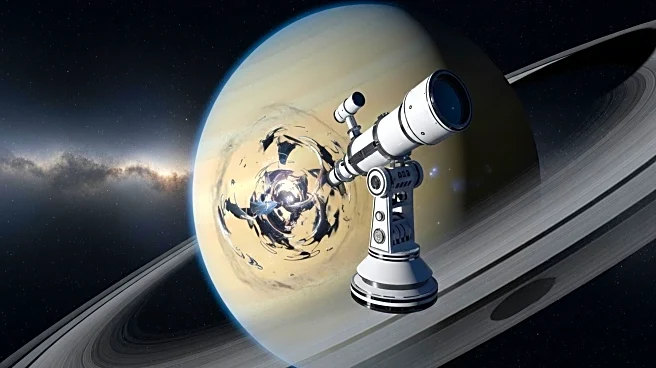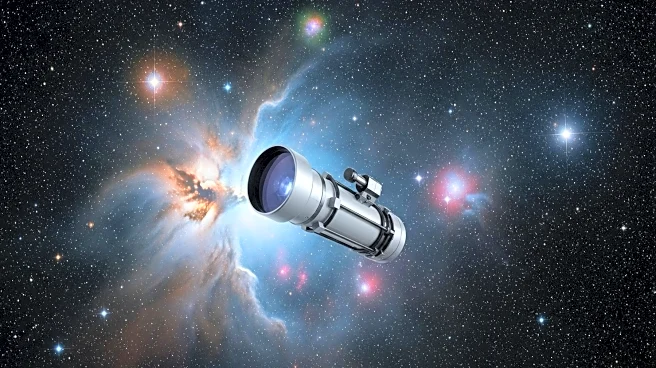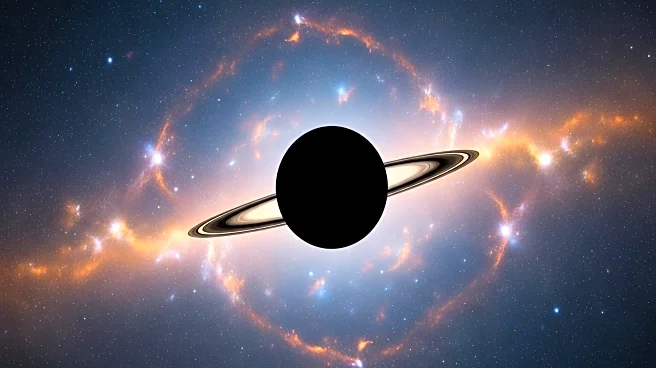What is the story about?
What's Happening?
A cosmic object known as 'The Accident' has provided astronomers with a glimpse of silane, a rare silicon-based molecule, in the atmospheres of giant planets like Jupiter and Saturn. This faint brown dwarf, too small to be a star and too large to be a planet, was studied using the James Webb Space Telescope. The discovery of silane, a molecule long expected but never found in gas giants, offers new insights into the chemistry of these planets. The Accident's unique atmosphere, a mix of traits from young and old brown dwarfs, has challenged standard detection techniques, leading to this breakthrough.
Why It's Important?
The detection of silane in The Accident's atmosphere is significant for understanding the chemical composition of giant planets. Silicon, abundant in the universe, has been difficult to detect in these atmospheres due to its tendency to form oxides with oxygen. The presence of silane suggests that under certain conditions, silicon can bond with hydrogen instead. This discovery could inform studies on the atmospheres of gas giants and brown dwarfs, potentially impacting theories on planetary formation and evolution. Understanding these chemical processes is crucial for astrophysics and could influence future research on exoplanets.
What's Next?
Researchers will continue studying The Accident to explore the conditions that allowed silane to form in its atmosphere. The findings may lead to a better understanding of the chemical dynamics in giant planets and brown dwarfs. Further observations could reveal more about the role of silicon in planetary atmospheres, potentially informing studies on exoplanets and their habitability. The James Webb Space Telescope will continue to play a key role in these investigations, providing detailed data on cosmic objects and their chemical compositions.
Beyond the Headlines
The discovery of silane in The Accident's atmosphere could have broader implications for understanding the early universe's chemical conditions. The unique traits of this brown dwarf offer insights into the processes that governed planetary formation in the aftermath of the Big Bang. This research may also shed light on the role of silicon and other elements in shaping planetary atmospheres, influencing future studies on exoplanets and their potential for habitability.
AI Generated Content
Do you find this article useful?













